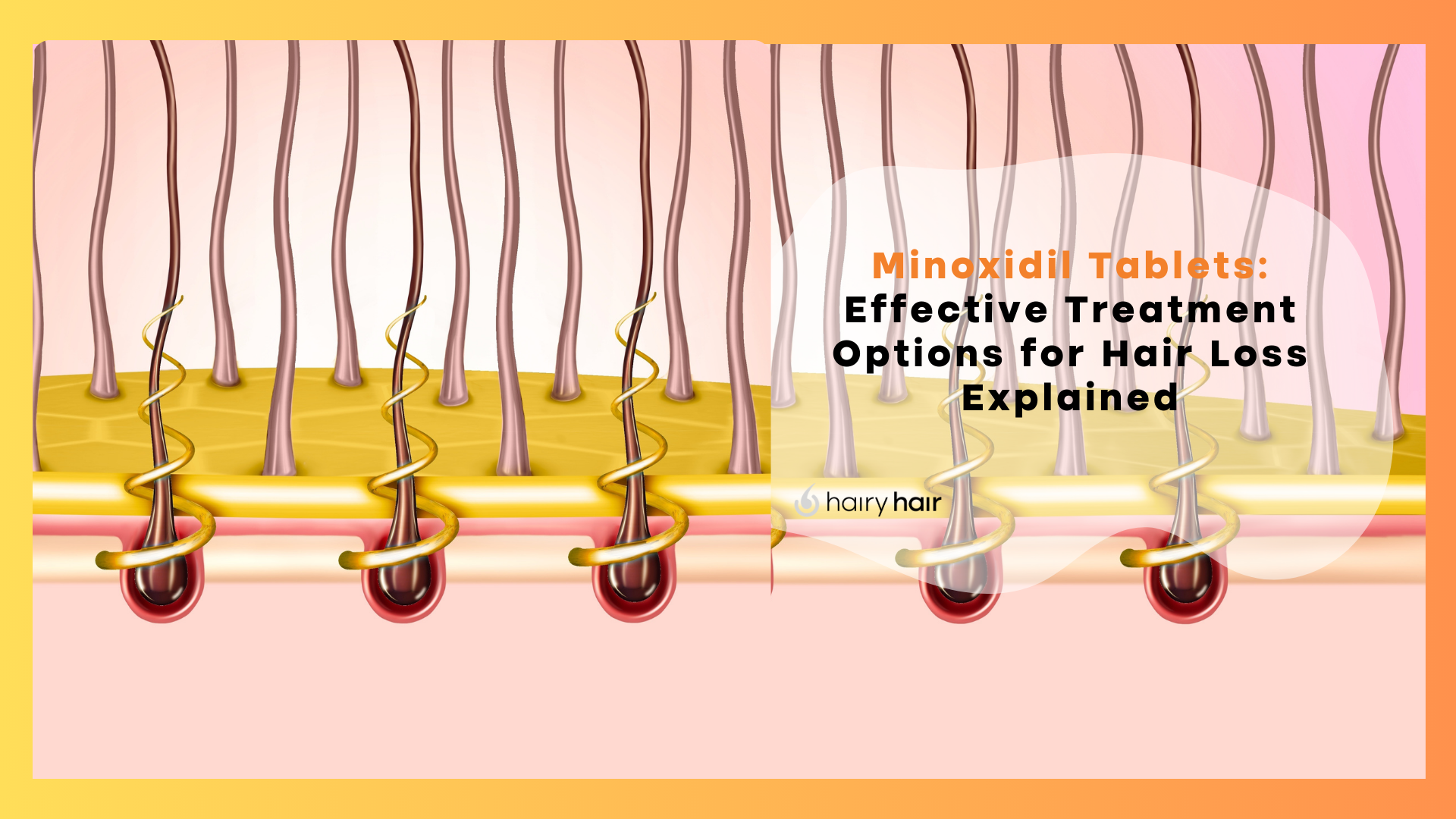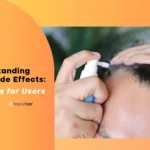If you’re suffering from hair loss you’ve probably researched baldness therapy. The first step to understanding your hair loss and how to fight it is to find the cause of your hair falling out. We’ll go through the reasons for hair loss, what factors can affect the hair follicles, treatment advice and how to make lifestyle changes to support a healthy scalp environment.
We’ll also tell you how Hairy Hair may help you deal with your hair loss. Our unique treatment solution can potentially help to tackle a range of causes of hair loss providing a baldness therapy to possibly facilitate the regrowth of your hair and your confidence.
- Understanding hair loss
- Hair growth and hair follicles
- What are the medical treatments for hair loss?
- How can Hairy Hair help with hair loss?
- What are alternative and emerging hair loss therapies?
- What are lifestyle changes and home remedies to tackle hair loss?
- How should I prepare for hair restoration?
- Final thoughts
Understanding hair loss
Hair loss and hair thinning can come in many forms, from genetics to autoimmune conditions, nutritional deficiencies and stress.
Androgenetic alopecia (also known as male pattern baldness) is a condition that involves the action of hormones called androgens, leading to hair loss and thinning. It is the most common cause of hair loss.
It can start any time after puberty and is more common in men with a family history of hair loss.
The condition is related to increased androgen activity, which can cause you to lose hair and lead to balding.
Hair growth and hair follicles
Hair follicle structure and function
Each hair develops from a follicle and goes through three phases of growth: anagen, catagen, and telogen.
- The anagen phase is the active growth phase, lasting two to seven years.
- The catagen phase is the transition phase, lasting about two weeks.
- The telogen phase is the resting phase, lasting around three months.
Factors affecting hair growth
Hormonal imbalances, genetics, and age can affect hair growth and lead to hair loss.
Poor diet, stress, and certain medical conditions can also impact hair growth.
Hair growth can be stimulated through medical treatments, lifestyle changes, and alternative therapies.
Start your simple, effective hair growth journey with our daily hair pill.
What are the medical treatments for hair loss?
Medication for hair loss
Certain topical and oral treatments can effectively address hair loss and promote hair regrowth. Some formulations are available over the counter in different concentrations to support hair follicle stimulation, while others work by targeting underlying causes of hair thinning. However, potential side effects should be considered before starting any treatment.
Hair transplant surgery
Hair transplant surgery can help with permanent hair loss, especially on the top of the head.
The procedure involves removing hair from one part of the head and transplanting it to another. Each graft is planted in a slit in the scalp created in the area of missing hair.
Hair transplantation is expensive and can be time-intensive. The procedure does not require hospitalization but is painful and sedation is usually required.
Risks include bleeding, bruising, swelling, and infection, and multiple surgeries may be needed. Surgical procedures to treat baldness are not usually covered by insurance.
How can Hairy Hair help with hair loss?
The Hairy Hair pill provides a comprehensive approach to baldness therapy. With natural ingredients, the formula tackles different causes of hair loss and thinning hair.
The medication works to help potentially block the production of dihydrotestosterone (DHT), the hormone that causes hair follicles to shrink and eventually leads to hair loss. It also may provide the hair follicles with more oxygen and nutrients by widening the blood vessels to promote hair growth.
After filling in a quick online form one of our qualified Australian GPs will give you a call to discuss your hair loss and your personalised treatment plan. After answering any questions you may have, your prescription will be ready to be sent directly to your door. Manage your entire treatment plan right from the comfort of your home, no clinic visits are needed.
What are alternative and emerging hair loss therapies?
Low-level laser therapy for hair growth
Low-level laser devices have been approved for treating male pattern hair loss.
The Dermatology Times have shown that laser therapy can improve hair density, but more research is needed.
Laser therapy may be a non-invasive and pain-free option for hair loss treatment.
Clinical trials and emerging therapies
Clinical trials are ongoing to test new treatments, interventions, and devices for hair loss.
Emerging treatments such as stem cell therapy may offer new hope for hair restoration. Further research is required to understand how effective these treatments are.
Answer a few quick questions to find your perfect hair growth solution.
What are lifestyle changes and home remedies to tackle hair loss?
Dietary changes for hair health
To encourage hair growth and decrease hair loss you should try to eat a balanced diet rich in vitamins and minerals.
Foods high in omega-3 fatty acids, zinc, and biotin can help nourish the hair follicles.
A healthy diet can help reduce stress and promote overall hair health.
Stress reduction and hair loss
High blood pressure and stress levels can contribute to hair loss and slow down hair growth.
Meditation, yoga, and deep breathing can help stimulate hair growth as they reduce the levels of stress in the body. Scalp massages can not only lower stress but also stimulate partial hair regrowth by encouraging the flow of oxygen to the scalp.
Getting enough sleep and exercising regularly can also help reduce stress and promote hair health.
How should I prepare for hair restoration?
What to expect from your doctor
Your doctor will ask you several questions, including those about your age-related hair loss, hair growth, and treatment options.
Be prepared to answer these questions and discuss your concerns with your doctor.
Your doctor may also perform a physical exam and order tests to assess your hair loss.
Maximising treatment success
Be patient and consistent with your treatment plan to maximise success.
Follow your doctor’s instructions and attend follow-up appointments to monitor progress.
Combining medical treatments with lifestyle changes and alternative therapies can help achieve optimal results. It may take at least six months to see results from hair loss treatments.
Conclusion
Finding the right approach to baldness therapy requires you to understand the root of your hair loss. There can be many causes of hair loss from hormones to family history and nutritional issues. Having a well-rounded approach to fighting your hair loss may give you the best conditions for promoting hair growth.
Contact Hairy Hair today to begin your potential hair regrowth journey with our dedicated support team. We’re on hand to guide you through every step of your fight against hair loss with regular checkups to monitor your progress. If you’re worried about your hair loss, choose a treatment that works for you.



